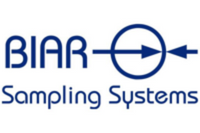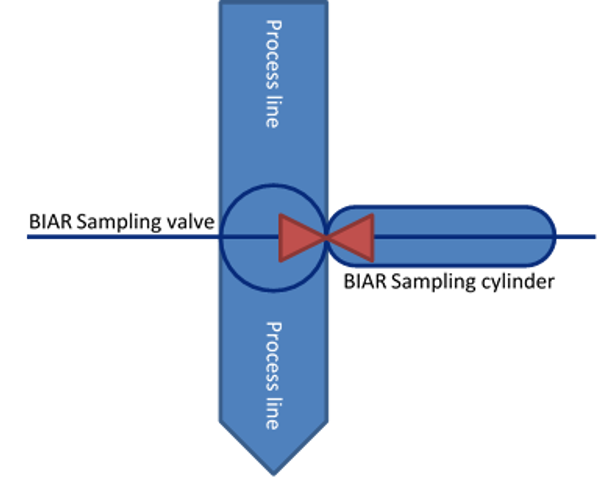LIQUID SAMPLING TOOLS
Click here to get a PDF version of this article
Sampling liquefied gases such as Chlorine, Liquefied Petroleum Gas (LPG) and other is very challenging mainly because these are toxic chemicals and no exposure is allowed.
New Technology
Consult this page to understand how BIAR COLUMBIA-LY sample container provide a sufficient vapor space to prevent over-pressure from volumetric expansion.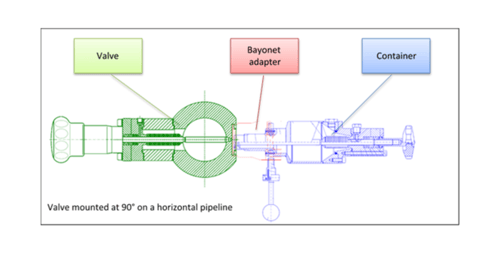
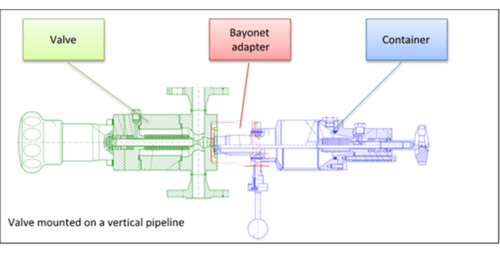 To improve the current sample method by simplifying the process, reducing potential leak points and improving the general quality of the equipment, we propose using one of our valves with a sample cylinder and associated accessories such as bayonet connection and safety plug.
To improve the current sample method by simplifying the process, reducing potential leak points and improving the general quality of the equipment, we propose using one of our valves with a sample cylinder and associated accessories such as bayonet connection and safety plug. To provide volume for product expansion, the valve must be installed on a vertical pipeline or at 90° on a horizontal pipeline as illustrated on the left.
Purely from the sample process point of view, the simplest and recommended way is to install the valve directly on the process line. However, if this is not possible, another recommended way is to install the valve on a fast loop between the high-pressure and low-pressure sides of the pump in a re-circulation line. Assuming the valve is installed directly on the process line or on a fast loop with constant product flow-through, the steps to grab a sample will be the following:
- Remove the safety plug from the bayonet connection (secondary containment)
- Remove the safety cap from the sample cylinder
- Connect the sample cylinder
- Open the sample cylinder
- Open the sample valve
- Wait a defined amount of time to make sure the desired sample amount is collected
- Close the sample cylinder
- Close the sample valve
- Disconnect the sample cylinder
- Put the safety cap back on the sample cylinder
- Put the safety plug back on the sample valve
Traditional Sample methods
Some risks present in traditional sample methods are:
- Numerous steps require the operator to handle multiple valves in a precise sequence in order to prevent exposure and guarantee a representative sample.
- There are numerous potential leak points
- The nature of some fittings (i.e. Quick-connect flexible tubing) present potential exposure risks
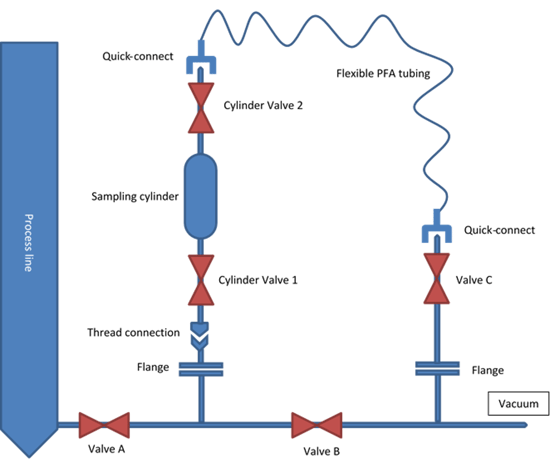
- Remove the safety cap from the thread connection
- Remove the safety cap from the sample cylinder
- Screw the sample cylinder to the thread connection
- Connect the quick-connect on the sample cylinder
- Make sure Valve B is closed
- Open Valve C
- Open Cylinder Valve 2
- Open Cylinder Valve 1
- Open valve A
- Wait a defined period of time
- Close Cylinder Valve 2
- Close Cylinder Valve 1
- Close Valve A
- Wait a defined period of time to make sure the flexible PFA tubing has been entirely flushed
- Close Valve C
- Open Valve B
- Wait a defined period of time to make sure the thread connection and tubing between Valve A and Valve B have been entirely flushed
- Close valve B
- Disconnect the quick-connect on the sample cylinder
- Unscrew the sample cylinder from the thread connection
- Put the safety cap back on the thread connection
- Put the safety cap back on the sample cylinder
Additionally, the product that is extracted from the process line and is not collected in the sample cylinder must be recycled in a safe way - this is in itself another challenging aspect linked to sampling.
Other differences of the proposed solution vs. the traditional method:
- Both the Sample Valve and Sample Cylinder can be fitted with bellows-type seals, providing perfect sealing and increased safety versus traditional stuffing box or other sealing technics
- To guarantee a representative sample, the sample cylinder must be prepared prior to sampling - it is not possible to flush it at the sample point.
- To guarantee robust, high quality equipment and disassembling functionality, the design of our sample cylinders are heavier and more bulky than sample cylinders readily available in the industry
- Because it is a proprietary design, BIAR is the only supplier of the proposed sample cylinders
Click here to get a PDF version of this article
